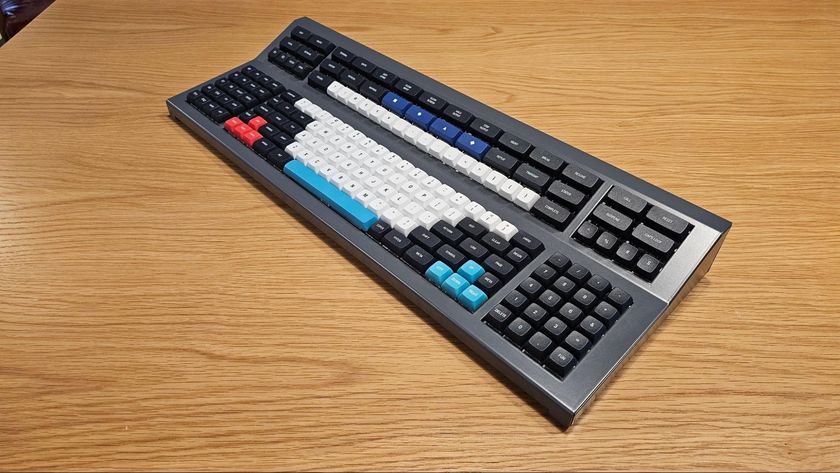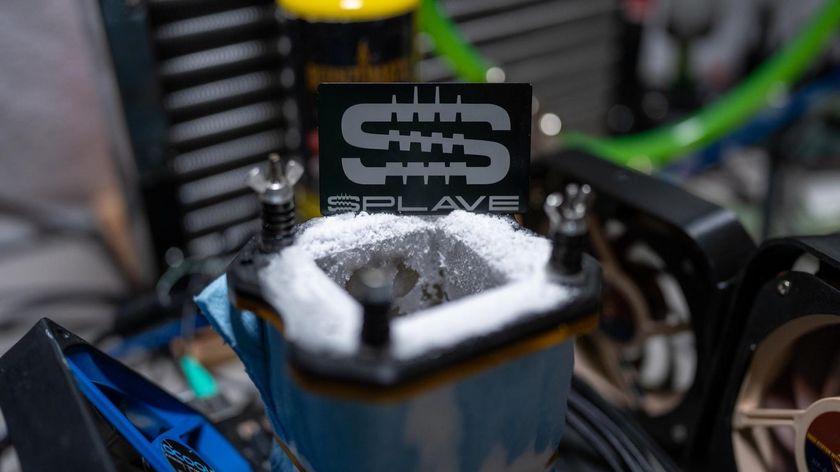ATI's Radeon 2600 XT Remixed
Conclusion
These benchmarks tell us a very interesting story about the DirectX 10 midrange cards.
The DirectX 10 midrange is ideal for playable performance up to 1280x1024 (standard 4:3 ratio) or 1400x1050 (widescreen ratio) with minimal image quality enhancements. This syncs up well with 19" 4:3 LCD displays or 20" LCD widescreen displays, which are both on the affordable end of the spectrum and are therefore likely to be monitor options for those who are looking to buy this class of card.
The first bit of encouraging news is that, similar to their DirectX 9 counterparts like the 7600 GT and X1650 XT, they can play pretty much everything out there at a resolution of 1280x1024 to 1400x1050. For the ~$100 price point, this isn't a bad thing at all. Playability is affordable for almost any gamer at that price.
Our second lesson is that 4x AA and 8xAF are not viable options for either the 2600 XT or 8600 GT. While it's true that the GeForce 8600 GT can usually handle 1024x768 with these options while the 2600 XT cannot, in reality who would chose that over the 1280x1024 resolution?
Keep in mind that LCD displays running anything but their native resolution will provide lowered image quality due to the fact that the display has to be scaled. So why run 1024x768 with antialiasing when the resulting image will be further distorted on a monitor with a higher native resolution? While the 8600 GT has an edge in antialiasing 1024x768, it's not a significant real-world edge.
When we concentrate on the most relevant results - that is, 1280x1024 with no AA or AF - we see a very close race between the 2600 XT and 8600 GT, with the 2600 XT having a slight advantage in the majority of benchmarks.
Keep in mind, this conclusion is for stock speeds only: third-party overclocking tools such as Atitool do not yet support the 2600 series, so overclocking is something we'll revisit in the future. For now, the 8600 GT is probably the better overclocking choice. But at stock speeds, it's still a very close race.
Stay On the Cutting Edge: Get the Tom's Hardware Newsletter
Get Tom's Hardware's best news and in-depth reviews, straight to your inbox.
In the final analysis, has the lowered memory speed of the new 2600 XTs made the card a bad buy? Clearly not. Today's $100 2600 XT still delivers where it counts. In fact, this slightly slower card at this new price is a much better deal than the 2600 XT reference cards were on release.
Graphics cards in the $100 price category have never performed this well before, and that looks like positive progress to us.
Author's Opinion
While the new 2600 XT product is solid Compare Prices on 2600 XT Video Cards - and even recommended in the price range, along with the 8600 GT GDDR3 - that does not mean we condone the practice that some manufacturers take to lower the clock speeds from the reference. In the case of the 2600 XT, the memory speed of this product has been lowered slightly by more than 10% from the true reference 2600 XT speeds. Happily, this did not lower performance all that much, and we suspect much of the slack has been taken up by newer drivers from ATI that offer a bit more jam.
In some cases however, we have seen certain cards offered with far lower speeds than the reference cards, that are still advertised with the name of the higher-performing card. If you see a 7600 GT, X1650 PRO or 8600 GT (to name a few) with DDR2 instead of GDDR3, memory speeds might be as low as 50% of the reference speed. These cards are often available with an impressive-sounding 512 MB of video RAM so that consumers will assume they perform better than their 256 MB GDDR3 counterparts. In reality, the extra RAM will not make up for the large clock speed deficit.












